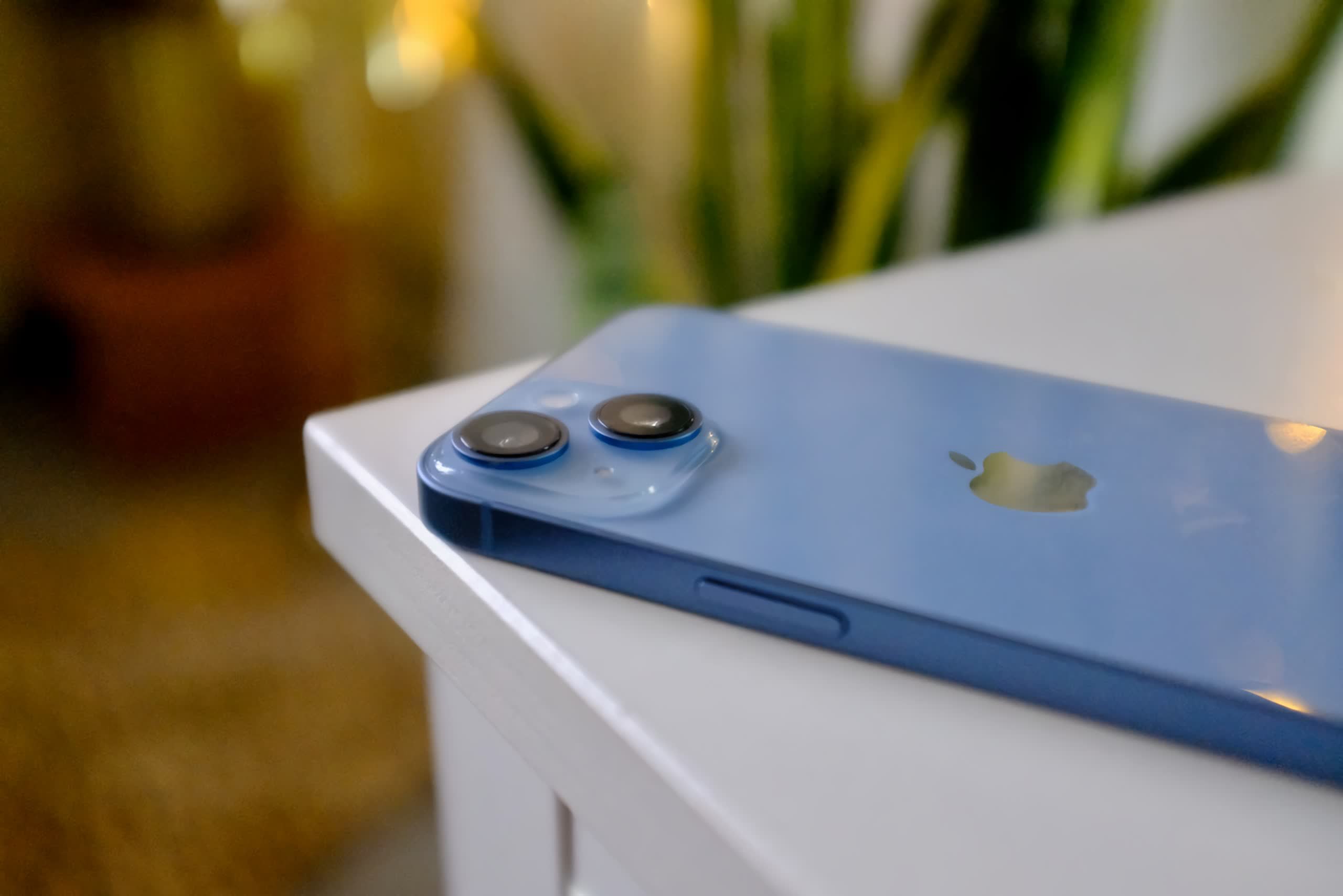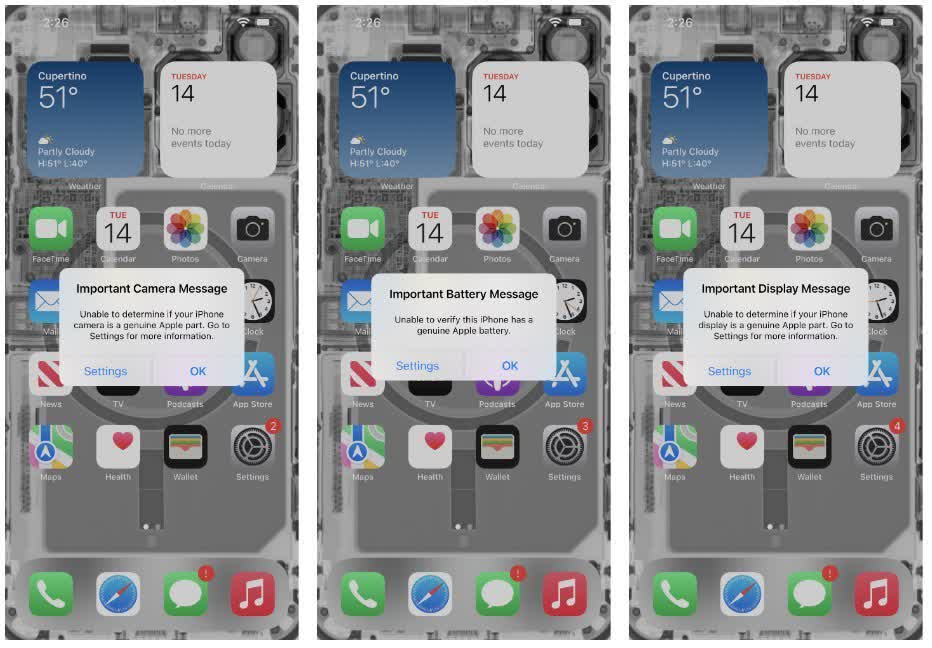WTF?! While Apple's repair program has many caveats and pitfalls, it's still better than what the company offered before, which was nothing. However, now it appears it's been one step forward and two steps back as iFixit retracted the iPhone 14's repairability score of 7 "recommended" and gave it a 4 "not recommended" due to part-pairing procedures.
On Tuesday, iFixit announced it would be dropping its original fixability score for the iPhone 14 from a 7/10 to a 4/10, putting it into the website's do-not-recommend range. iFixit CEO Kyle Wiens explains that the initial score was based on the phone's hardware being much more accessible and easier to disassemble, which is still the case.
However, after awarding the score, it appeared that repairability was not so great when using unauthorized or unpaired parts. Wiens says that most repairs first require an okay from Apple. When complete, the fix must then be "validated" by Apple techs via Apple's System Configuration tool. Wiens describes the process as a "software" handshake, referred to as "part pairing."
"Today, you need one more thing: a software handshake using Apple's System Configuration tool. It contacts Apple's servers to "authenticate" the repair, then "pairs" the new part to your system so it works as expected. Of course, it can only authenticate if Apple knows about your repair in advance because you gave them the exact serial number of your iPhone, and they've pre-matched it to a display or battery. This is only possible if you buy the screen or battery directly from Apple."
If repair techs don't follow these steps or replacements are not brand-new Apple parts, it sets off a software flag that limits functionality. Additionally, Wiens showed examples of warning messages for three aftermarket replacements--camera, screen, and even batteries were flagged and presented nag alerts declaring the system cannot verify the parts are genuine (below).
The system throws a big old monkey wrench into Apple's self-aggrandizing DIY repair program and its commitment to allowing mom-and-pop shops to repair iPhones. Most of these smaller businesses cannibalize broken devices that contain used but still perfectly functional components to pass savings on to the customer. What does this do to Apple's goal of being carbon neutral by 2030? Does it even count this unnecessary e-waste? It's doubtful. "Not in our house, not our problem."
There are also brand-new battery replacements to consider. Using a third-party battery is much cheaper than Apple's overpriced cells, but if using one causes the software to act like this, it's not worth it to the shop or the individual DIYer to bother. Furthermore, even when using genuine Apple components, the pop-ups still occur if part pairing through Apple is skipped.
Some shop owners have told iFixit that they completely pulled out of iPhone repair because of Apple's shenanigans.
"The situation has gotten so bad that several repair professionals have told us they're leaving the business entirely rather than navigate the labyrinthine maze of obstacles that Apple has erected," Wiens wrote.
The issue has also caused iFixit to re-evaluate its scoring system and adjust it to include software limitations on self-repair.
"And now that we've run the iPhone 14 through our new scorecard, the picture isn't as rosy," Wiens said. "The iPhone 14's new 4/10 score reflects the fact that individuals and independent repair shops encounter some atrocious limitations when trying to fix it."
Apple's current repair stance is still better than its previous attitude of "no repair for you" from a few years ago, but to say it's entirely on board with the right-to-repair movement would give it too much credit. Wiens says "good people" at Apple are still working to improve repairability. Maybe pressure from iFixit and negative press can spur Cupertino into taking action to fix this problem.

